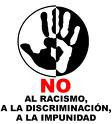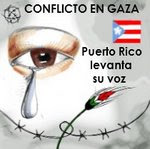
The discrepancies in the Puerto Rico police logs were hard to miss. Burglaries, including stolen plasma televisions and jewelry, were coded as mere breaking and entering. Large-scale thefts of telephone company cables were labeled property damage.
After months spent investigating, it was clear to Norman O. Torrens, an internal affairs agent for the Puerto Rico Police Department, that scores of felony crimes in Vega Alta, in the north, were being intentionally recorded as misdemeanors. The result was that these crimes were not counted in statistics released by the Police Department to support its claim that while the murder rate was higher than ever, other felonies were declining.
“They are lying to the people of Puerto Rico by telling them that crime statistics are going down,” said Officer Torrens, 37, who was abruptly demoted this summer after presenting his findings, first to his supervisor and then to officials in Puerto Rico’s Justice Department. “The bosses are the ones who push this to happen. The culture here is if you don’t produce, you get nowhere.”
The manipulation of statistics, long suspected by Puerto Ricans, is just one of the systemic failures that the Police Department must reverse after a blistering report last month from the United States Department of Justice outlined widespread dysfunction and civil rights violations.
For decades, the Police Department has operated without much oversight and officers have maneuvered with little supervision, training or accountability. The failings, detailed not only in the Justice Department report but also by the governor’s own monitor, are glaring:
Until recently, not one police precinct had instructions for handling domestic violence; civilian complaints piled up by the thousands, unaddressed; hate crimes went unrecognized; continuing training for police officers was unheard of; officers went unpaid for long stretches; and the Police Department was not connected to the national crime database, which meant that criminals from the 50 states could easily slip through the cracks here.
Gov. Luis G. Fortuño, a Republican, said in an interview that he was well aware of the department’s turbulent history and that the problems were worse than anticipated when he took office in 2009.
“Most of the problems occurred before my time,” Mr. Fortuño said. “I accept responsibility. My mandate is to change that. But this will take time. It was years in the making, and it will take years to fix.”
Rooted in the dictate of “la mano dura” — the Puerto Rican version of “get tough on crime” — the department operated for decades under a system that rewarded arrests much more than community policing, criminologists say. The result, they say, is that most Puerto Ricans do not trust or respect the police, including claims that most violent crime is down.
“This was all predicted 15 years ago, this problem,” said Dora Nevares-Muñiz, a criminologist and law professor at the Inter American University of Puerto Rico who sat on a commission that evaluated the Police Department in 2008. “The vision of the police is not a vision of prevention. The vision is a vision of control, of intervention after the crime is committed. And even at that they are not efficient. And then every time the government changes here, they want to reinvent the wheel.”
Ms. Nevares-Muñiz said the public’s views about the police force had further deteriorated under Mr. Fortuño, whose New Progressive Party won supermajorities in the 2008 election. There is a sense, Ms. Nevares-Muñiz said, that the governor further politicized the Police Department — already an established tradition — and installed people who were overly eager to please.
This was one reason that ill-trained police officers used too much force on demonstrators last year in front of the Capitol, she said. The demonstrators were protesting government layoffs and college fee increases. The other reason is that Puerto Rico lacked an explicit policy on when and how to use force. The governor was widely criticized for his handling of the protest.
Favoritism in the department, Ms. Nevares-Muñiz said, had reached the point that many supervisors no longer relied on exams to promote officers.
This is why, in part, Officer Torrens chose to speak publicly. Rather than being promoted for his diligence — he had been assigned the task of investigating the department’s statistics in the Bayamón District — he was returned to patrol duty in the precinct he had investigated, a tricky turn of events for an internal affairs officer. He is suing the Police Department for what he said was his wrongful transfer.
“An officer knows he can get a special job if the boss is able to say that crime is going down,” said Officer Torrens, who has a record of positive evaluations. “So with traffic cops, you give tickets. With drug busts, you make arrests, whether the person has drugs or not. If you don’t arrest, you’re out.”
The governor said he was already working to change the culture of the Police Department along with its operational nuts and bolts long before the Justice Department report. Last month, he announced that the police and prosecutors would now work with the Federal Bureau of Investigation and the Bureau of Alcohol, Tobacco, Firearms and Explosives on armed robberies, carjackings and other crimes in five regions. Those cases will be handled in federal court, and the regions have been assigned six special prosecutors to expedite the cases.
Mr. Fortuño said he recognized that the department needed outside assistance last year, so he contracted Robert Warshaw, a career police chief who specializes in overhauling police departments. The same year, Puerto Rico finally looped into the national crime database.
Mr. Fortuño said he and his aides also had sought out experts in New York City. One day after the June 30, 2010, demonstration in front of the Capitol, during which the police struck protesters with truncheons and used pepper spray, the governor called to ask Mayor Michael R. Bloomberg and Police Commissioner Raymond W. Kelly for help, he said. The city complied.
The governor began in internal investigation of his own last September, when he appointed an independent monitor to investigate the scope of the failures, a precursor to the Justice Department report. The conclusion: the department was in disarray.
Four months ago, Mr. Fortuño replaced the police chief and began phasing in some of the changes, including better training — 2,000 officers so far have received it — and a detailed “use of force” policy. The tactical squad, which was often at the center of abuse accusations, has been cut by half. And promotions are reverting back to an exams-based system.
Other changes will follow in the next year, including the retraining of all supervisors and police officers and new software to track statistics and complaints.
But a few things are not likely to change soon. While police officers finally received the pay they were due, their salaries — the lowest in the United States — are not likely to rise with the economy still struggling. The median salary for a police officer in Puerto Rico is $31,000; in Orlando, Fla., for example, starting salaries are nearly $42,000. Still, police jobs are coveted on an island where college graduation rates are low and unemployment is high.
The governor’s critics say they wonder whether the flurry of changes will amount to anything lasting. After all, they say, the findings did not come as a surprise.
“There had to be pressure from outside for this to change,” said Osvaldo Toledo Martinez, the president of the Puerto Rican Bar Association and a vocal critic of Mr. Fortuño. “So it will change because he is now obligated to comply. We have to believe that people will trust in the police again. But they have to see positive action right away. If that happens, they will have confidence.”
October 4, 2011
Puerto Rico Prodded to Get Tough on Police
By LIZETTE ALVAREZ
nytimes.com






































 Fue un día de playa: aire, sol, arena, salitre, olas, aves, risas y risas, hasta que... ¿que caramba es eso? Digo, ¿Quiénes son esos? La gente se conmocionó viendo a dos Aliens, uno verde, otro amarillo, quienes saludaban a todo el mundo. Las mujeres, sobretodo, se posaban y tomaban fotos con ellos, sin saber quienes estaban detrás de la máscara. Ningún policía los paró y ni la migra se dio por enterada. El Homeland Security ni se preocupó por investigar a los felices Aliens.
Fue un día de playa: aire, sol, arena, salitre, olas, aves, risas y risas, hasta que... ¿que caramba es eso? Digo, ¿Quiénes son esos? La gente se conmocionó viendo a dos Aliens, uno verde, otro amarillo, quienes saludaban a todo el mundo. Las mujeres, sobretodo, se posaban y tomaban fotos con ellos, sin saber quienes estaban detrás de la máscara. Ningún policía los paró y ni la migra se dio por enterada. El Homeland Security ni se preocupó por investigar a los felices Aliens. 




